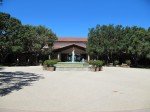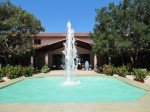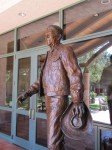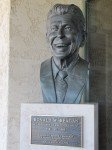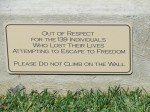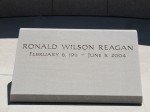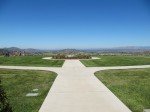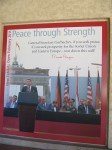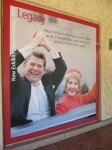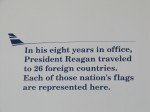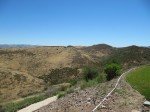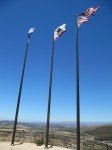Adventures from the Bay Area to Palm Desert
Christina and I hit the road over the last few days to visit her grandparents in Southern CA. We left on Saturday morning a few minutes after 5am and traded off sleeping and driving. I didn’t get to bed until 11pm Friday night because I was up cleaning the house from a long week. I’m always glad I cleaned the house prior to traveling because there is nothing more stressful than coming home tired from a trip than returning to a disorganized home. Not to mention, I had someone checking in on Wilbur, so I wanted to give the impression I have my life half together. I made a big pot of coffee, which Christina and I took with us on the road. About 30 minutes down I-5 I was a talking fool, the caffeine hit me and I don’t remember what the conversation consisted of, but it was tired caffeinated banter from me, I’m sure. I loaded up my iPhone with a bunch of podcasts, which came in handy after the caffeine and my bantering slowed down. I’ll post the interesting podcasts later with some comments, but I was happily playing talk show DJ for a few hours. At some point, she fell asleep, which gave me a chance to listen to Pandora for a while.
I think our first stop was a gas station and then McDonald’s for a gourmet breakfast of Egg McMuffins. The McDonald’s we stopped at was really busy for some reason, and in 20 minutes or less we were back on the road. If my groggy memory serves me right, Christina took over driving and I took a nap for an hour. I can usually get by on very little sleep, but anything under 6 hours, and I’m a zombie. I woke up when Christina was going over the grapevine, and we listened to more podcasts until we hit LA. We talked with Christina’s sister, brother-in-law and saw played with their baby for a few minutes before getting in their car to drive another two and a half hours to Palm Desert, which is outside of Palm Springs. Holy moly, Palm Desert is hot and dry, but I guess that is why the word desert is in its name.
We got back to the LA area around 9pm, so Christina and I went to a nice Mexican restaurant. Somewhere between 10:30 and 11:00 I found my hotel, which is a few feet from where trains go through town. Luckily only one train went by which was before I went to sleep. We had planned on going down to San Diego Sunday morning to see friends, but I think we were overly optimistic and decided it would be too much in one day. Therefore, we decided to head back to the Bay Area and hit as many destinations headed north as we could. The first stop we made was completely unplanned, which was the Ronald Reagan National Library (they need a new web designer). Of all places we visited yesterday, I think the Regan Library was my favorite. The above pictures and video are from our visit.
Our Road Trip Route
Bay Area → LA → Palm Desert → Ronald Reagan Library → Bay Area






